|
|
|
| How to Post Photos |
REGISTER (click here)
|
|
|
|
| How to Post Photos |
REGISTER (click here)
|

|
 SMP Silver Salon Forums SMP Silver Salon Forums
  20th/21st Century Silversmiths 20th/21st Century Silversmiths
  Margret Craver Margret Craver
|
| next newest topic | next oldest topic |
| Author | Topic: Margret Craver |
|
Scott Martin Forum Master Posts: 11520 |
  
Margret Craver has been mentioned a few times in past threads/posts. Below is some back ground. Does anyone have any examples of her work/mark to share? 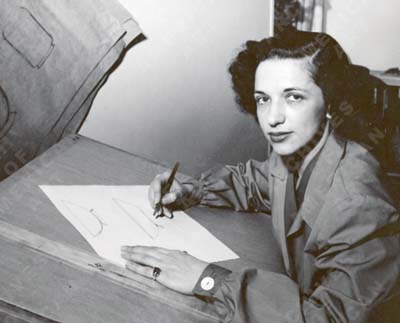 circa 1946
quote: IP: Logged |
|
Scott Martin Forum Master Posts: 11520 |
  
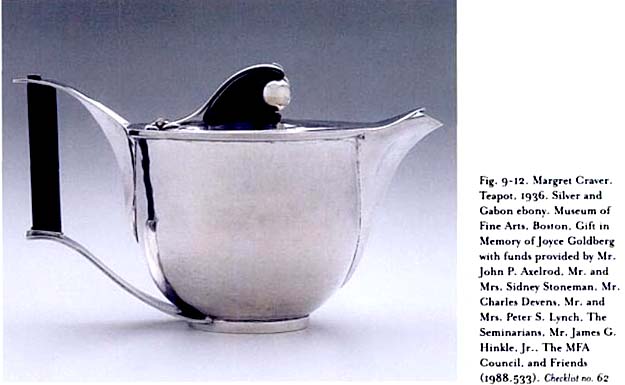 IP: Logged |
|
agleopar Posts: 850 |
  
Margret was a lovely, lovely lady who was vibrant and intelligent even in her 90's. I got to know her when she needed help packing up her tools that she was donating to the Smithsonian. It was a tough job - knowing that her beautiful tools would now be never used again! One was too bulky and weighty to ship so she gave it to me and I use it often and think of her gratefully. It was a Towle spoon Tease block mounted on a wooden base. Her enamel research took 7 years before she had one success but then could not reproduce good results again for another few years. As I understand it En Resille is free standing enamel - that is there is no base or wire of metal. The challenge is that when you combine different colors and add gold leaf (as a decorative element) the different coefficients of expansion mean that it is very unstable. some of her early ones were fine for a week, a month, a year and then they would start to ping and crack and break apart. I think part of the solution was very long and gradual annealings. She also spent time in London after the war, where she met the great smiths of the day, at The Central School of Art and Design for a conference. She was very proud of a large stump mounted raising stake that she had brought back from England. Retired and in her 80's she was a delight to visit and was always looking at new and interesting things such as micro minerals. Tiny pin head sized samples of rock that she would look at with a microscope. Just one example of her vitality and intelligence. It was an honor and pleasure to have known her. She has a daughter, I believe, in DC. IP: Logged |
|
Polly Posts: 1970 |
  
She sounds amazing, and I'm glad you've recorded memories of her on this forum for future readers to see. IP: Logged |
|
chicagosilver Posts: 227 |
  
In 1948, while working at Handy & Harman as Consulting Silversmith and head of the Craft Service Department, Margret Craver created "handwrought silver" -- a slender instructional brochure. According to the introduction: "This booklet is dedicated to the many students who are eager to build a form in silver. We do not attempt here a discussion of design, but rather, explain a working method by which you can develop ideas of your own. "For the sake of clarity, directions are given for one specific bowl. After studying the steps in its development, you can create your own designs by varying the sizes and shapes of the bowl and its foot. In conceiving an object that is to take its place in everyday living, think of its usefulness as well as its beauty. "By working directly in the silver by hand you will not only produce an object with a human quality but gain an understanding of the material. You will enjoy learning the technical skills that will make you master of the medium and open to you the unlimited possibilities for experimentation and research in design." IP: Logged |
|
chicagosilver Posts: 227 |
  
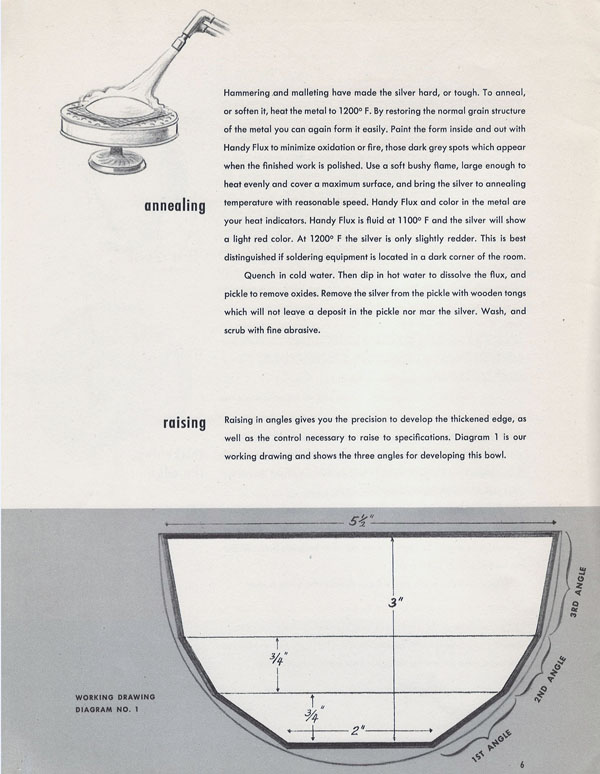 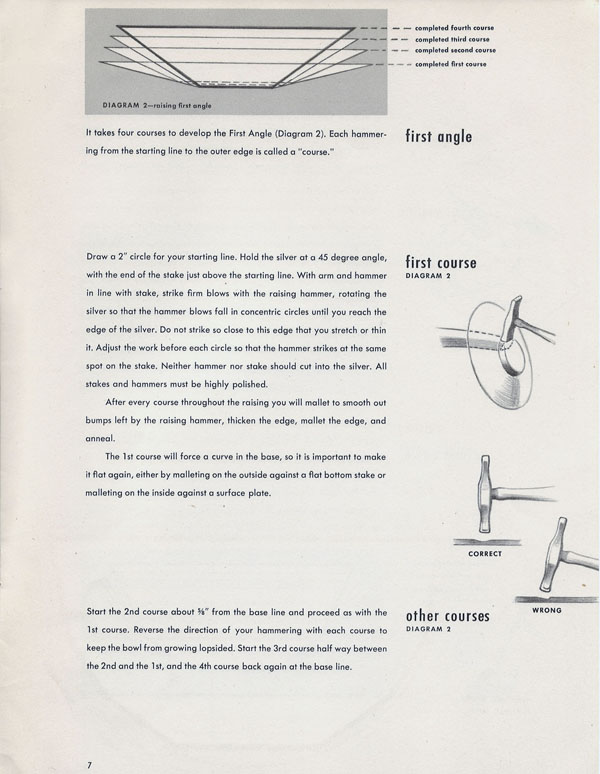 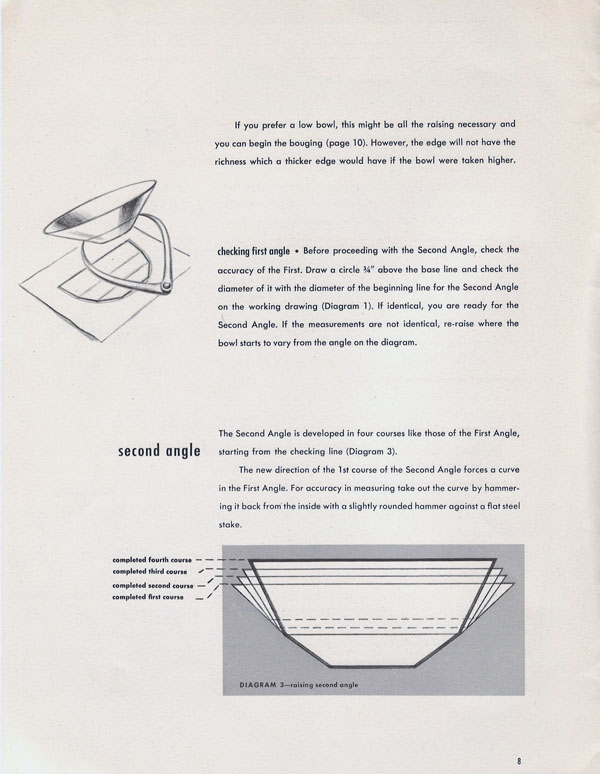 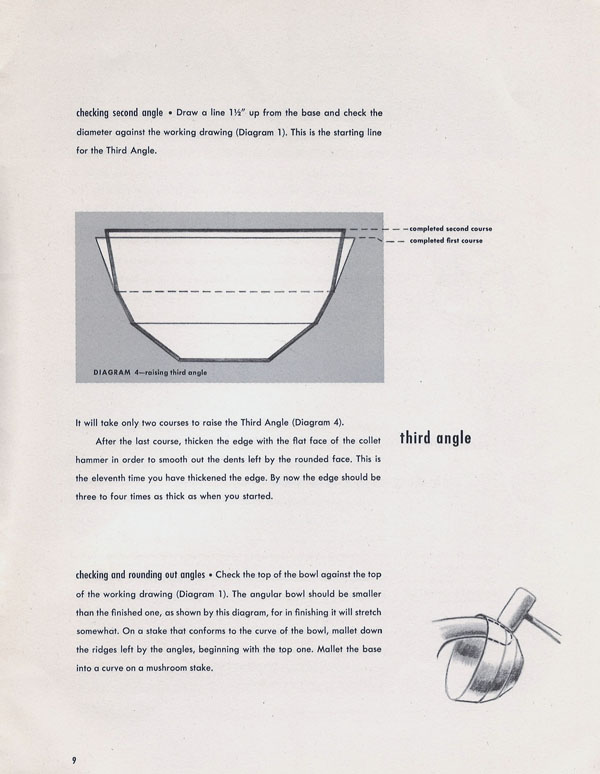 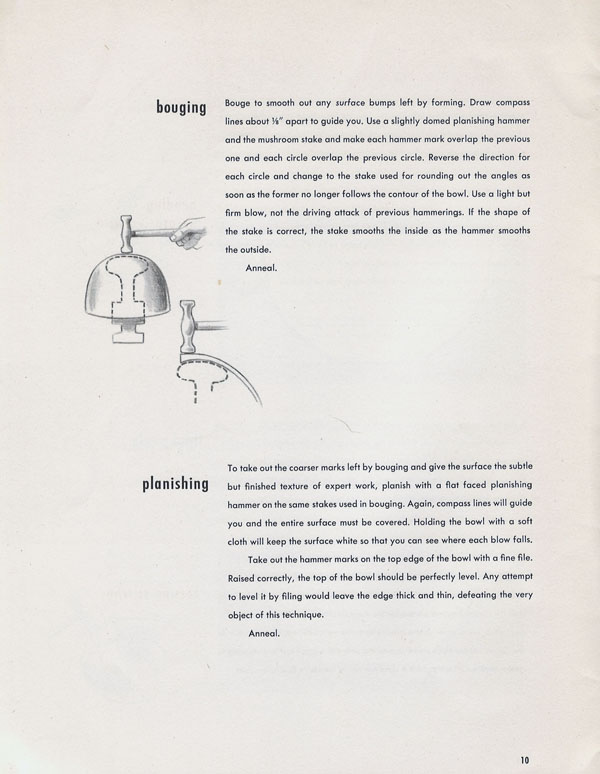 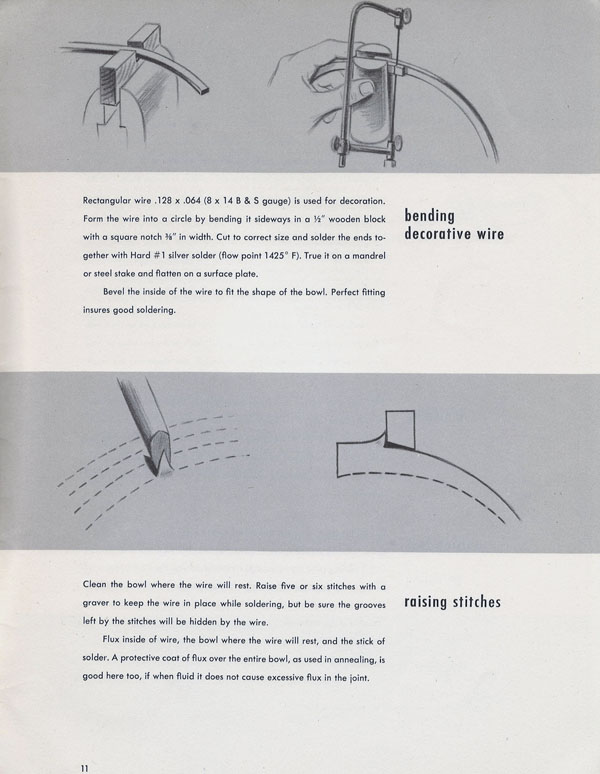 IP: Logged |
|
chicagosilver Posts: 227 |
  
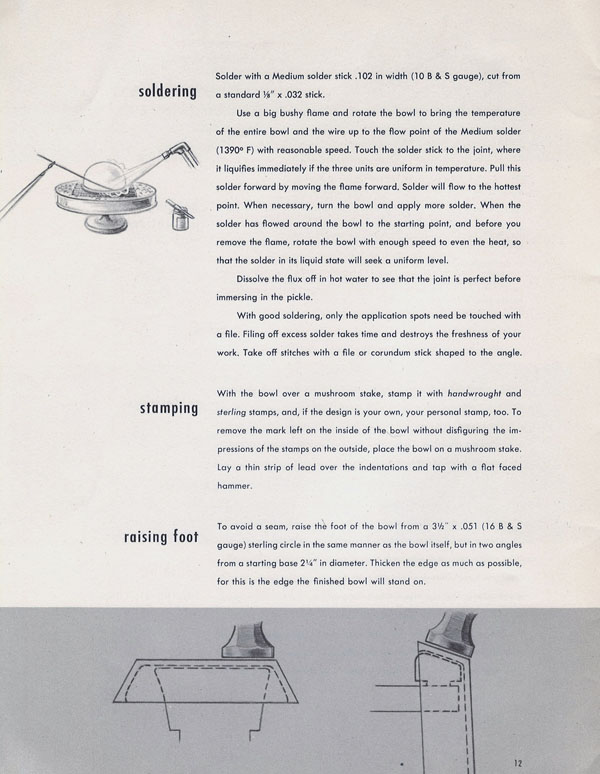 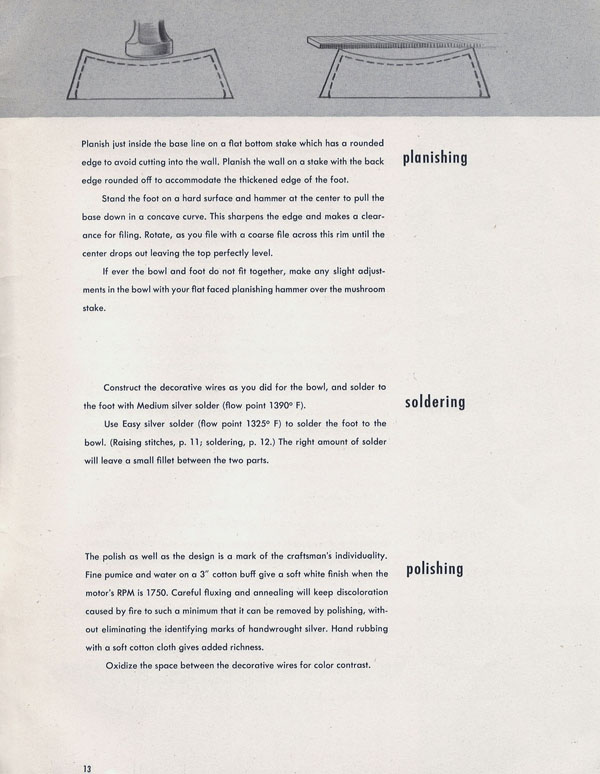 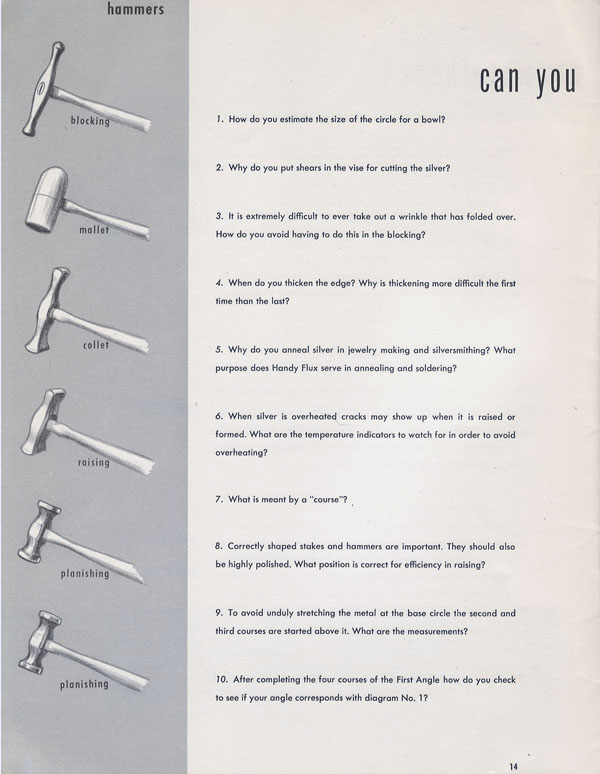 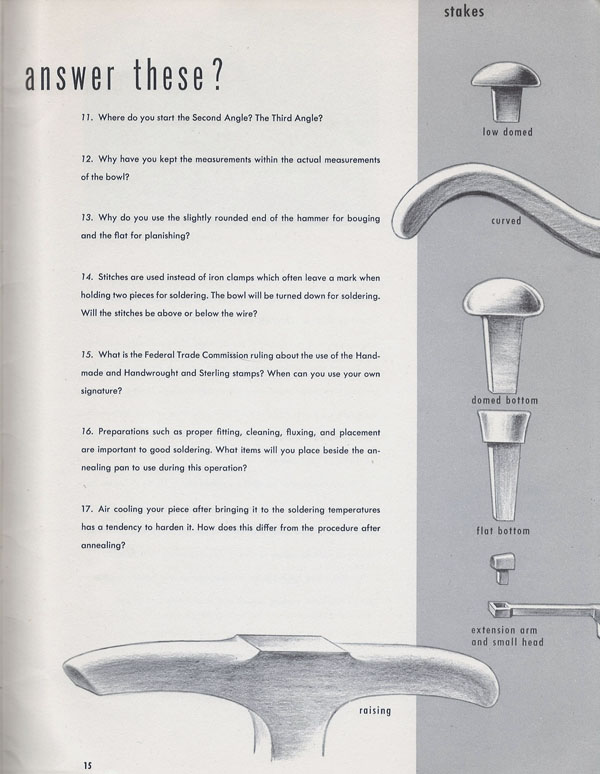 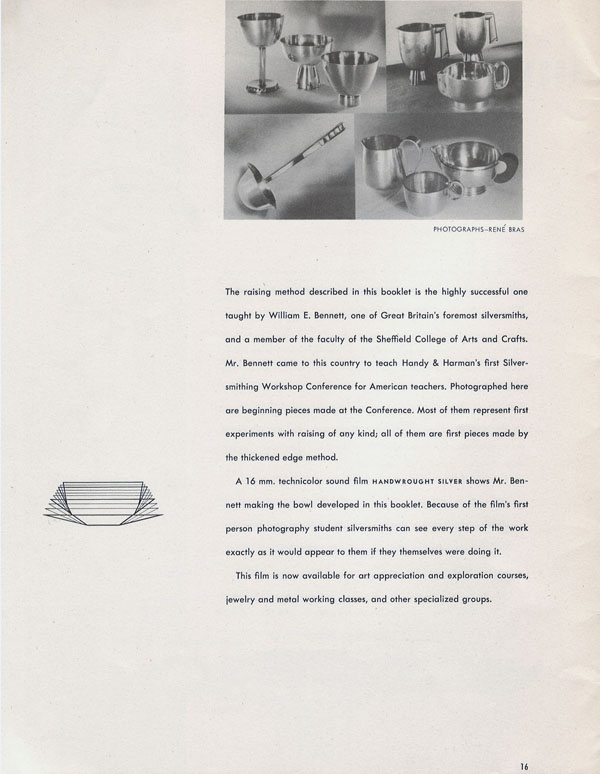 She also helped make a film covering the same topic. Here's a flyer for the film: IP: Logged |
|
FredZ Posts: 1070 |
  
Craver was influential in training so many craftsmen and women. agleopar, A spoon teast block mounted on a wooden base. Is this the anvil used to forge spoons? An image of it would be great! You say it was from Towle? Fred IP: Logged |
|
agleopar Posts: 850 |
  
Hi Fred, yes (and thank you for the correction - I love it when spell check can not handle my handicapt speeling) it is a proper teast block mounted, as you say, that stands on a wood base about 18 inches high. Each face of the flat square block has different radius so you can use them in different situations when hammering. The block is about six inches cubed with a large tang that extends down into the wood base about 5". It weighs 20-30 lbs. Margret's husband ran Towle and I imagine when things slowed down in the 60's-70's The spoon department could have had a few extra lying around... I love it and use it often. She was a great lady. I will try to get an image... IP: Logged |
|
Ulysses Dietz Moderator Posts: 1265 |
  
How did I miss this? Didn't I post this somewhere...Margret has been much on my mind since she died recently at over 100. Here's a bowl we purchased from her in 1948. And the mark on it, too. IP: Logged |
|
Scott Martin Forum Master Posts: 11520 |
  
Smithsonian Oral history interview with Margret Craver Withers 1983-1985 IP: Logged |
All times are ET | next newest topic | next oldest topic |
  |
|
Ultimate Bulletin Board 5.46a
|
1. Public Silver Forums (open Free membership) - anyone with a valid e-mail address may register. Once you have received your Silver Salon Forum password, and then if you abide by the Silver Salon Forum Guidelines, you may start a thread or post a reply in the New Members' Forum. New Members who show a continued willingness to participate, to completely read and abide by the Guidelines will be allowed to post to the Member Public Forums. 2. Private Silver Salon Forums (invitational or $ donation membership) - The Private Silver Salon Forums require registration and special authorization to view, search, start a thread or to post a reply. Special authorization can be obtained in one of several ways: by Invitation; Annual $ Donation; or via Special Limited Membership. For more details click here (under development). 3. Administrative/Special Private Forums (special membership required) - These forums are reserved for special subjects or administrative discussion. These forums are not open to the public and require special authorization to view or post. |
|
copyright © 1993 - 2022
SM Publications
All Rights Reserved. Legal & Privacy Notices |